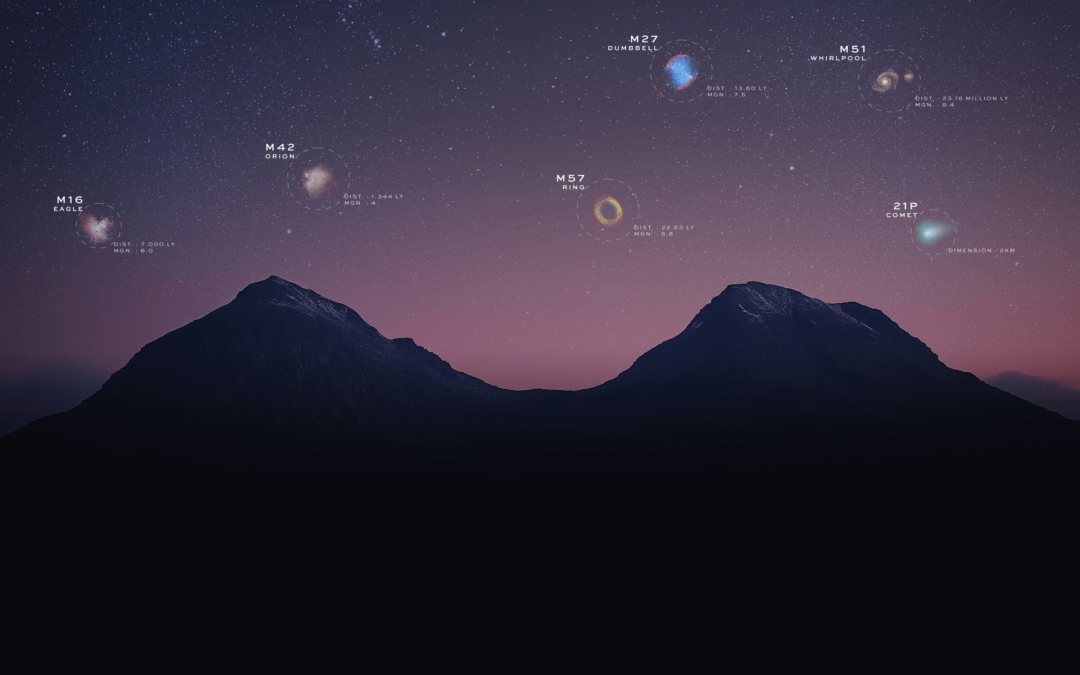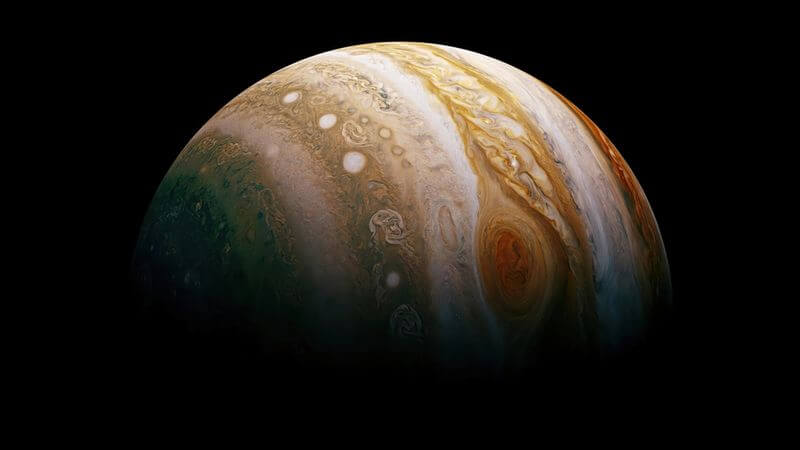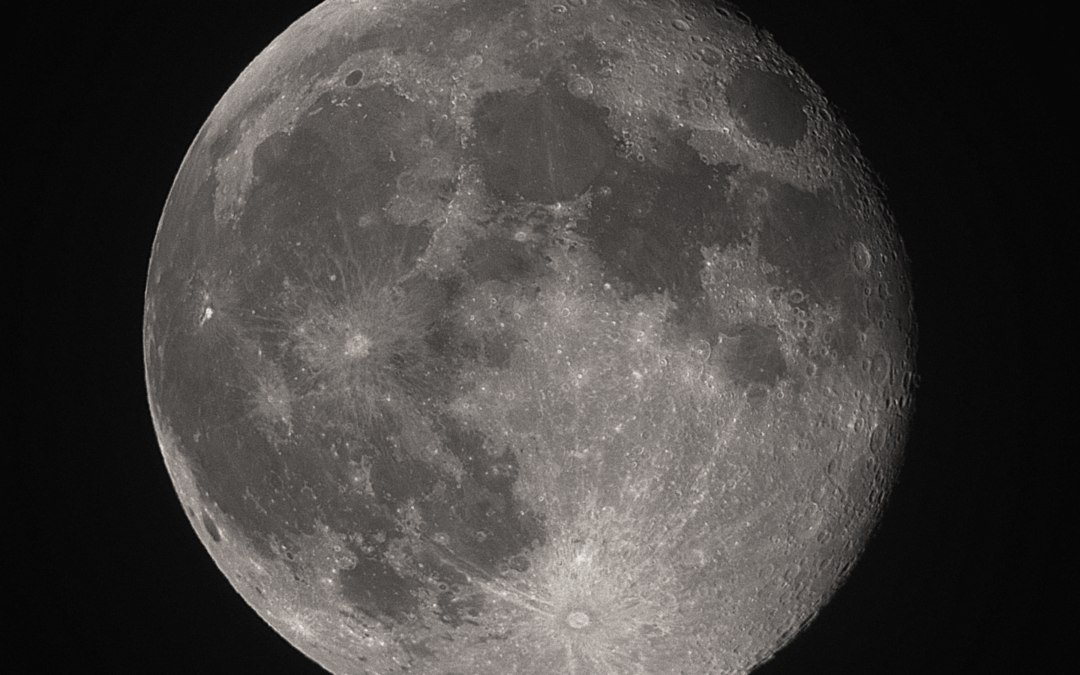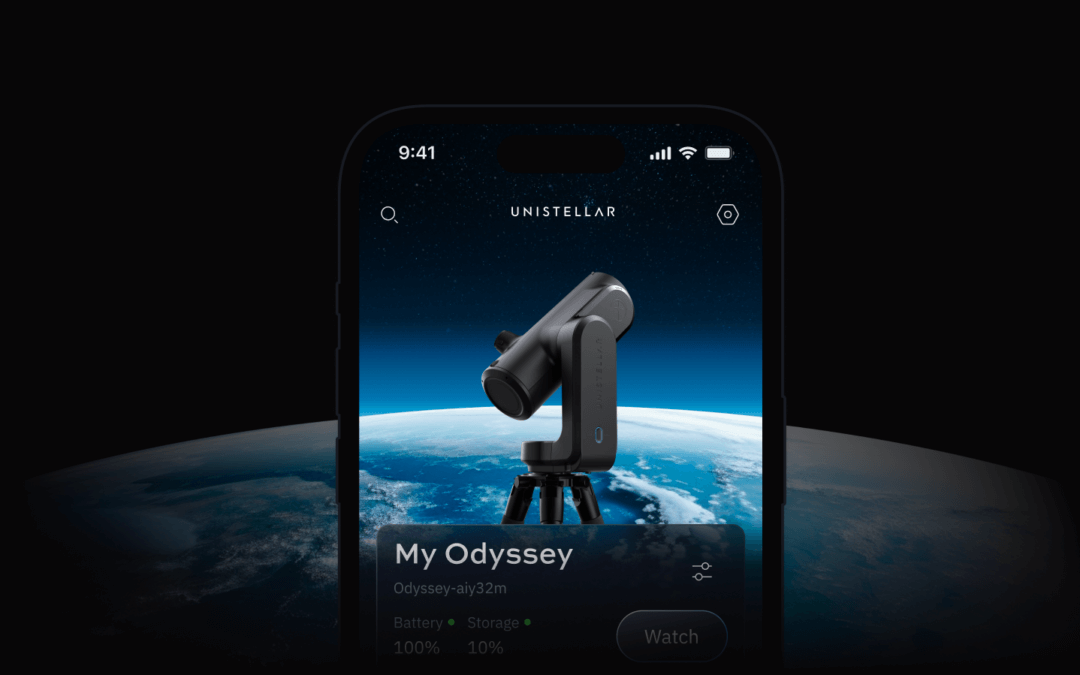Citizen scientists will have an opportunity to detect a target of NASA’s Lucy spacecraft, Trojan asteroid Leucus! On the night of January 4, asteroid 11351 Leucus will pass in front of a distant star from our view here on Earth, an event known as an occultation. On January 4 at 10:26 PM UTC, this occultation will be visible across the northernmost part of Scotland; Trondheim, Norway; Skellefteå, Sweden; Oulu, Finland; and western Russia.
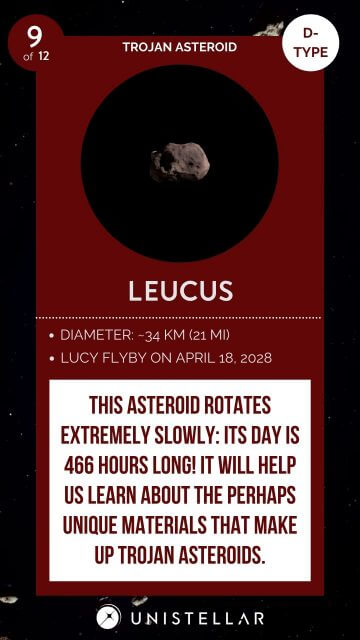
Lucy Trading Card #9: Leucus
NASA’s Lucy Mission, the first ever mission toward the Trojan asteroid swarms, launched on October 16 last year. Our team met up with citizen astronomers from the Unistellar Network who were invited to attend and captured this video of the launch!
Lucy will visit 5 different Trojan asteroids and will provide new insights into these primordial objects that formed the planets of our solar system, the origins of Earth, and even the formation of life.
The Lucy spacecraft is scheduled to visit Leucus in April 2028. Leucus was named after the character of the same name in Homer’s Iliad, companion of Odysseus and an Achaean warrior.
Along with Leucus, the Unistellar Network has already detected Trojan asteroids that NASA’s Lucy spacecraft will visit: 617 Patroclus and 21900 Orus. In December 2019, the Unistellar team observed one of the first-ever occultations of Leucus in Irvine, California.
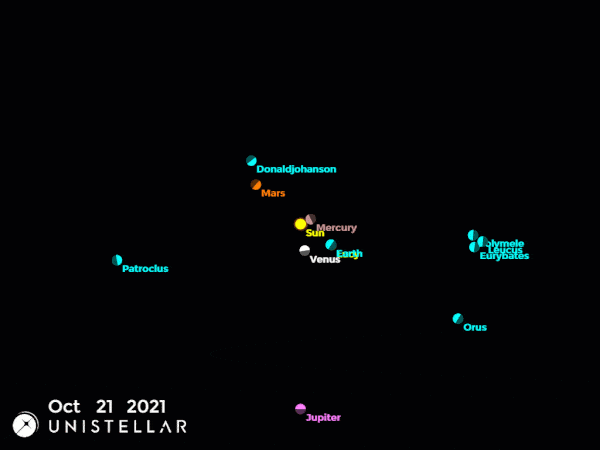
NASA Lucy Spacecraft Trajectory, simulation by Tony Dunn
Ready to observe?
If you detect the shadow of Leucus, you can help NASA improve Lucy’s guidance system!
Check out our Asteroid Occultation Predictions page for more details on this occultation including location, timing, and more.
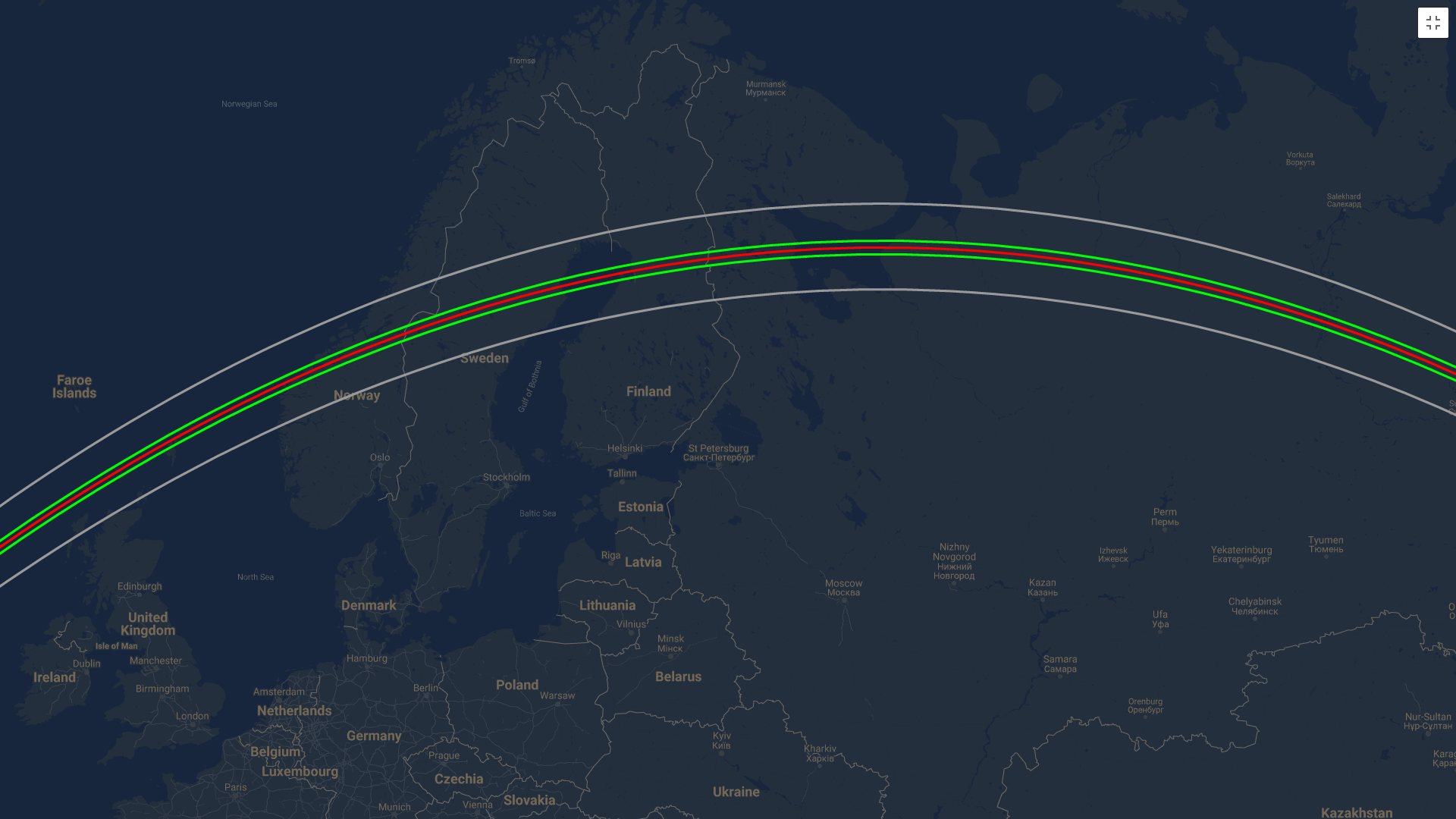
A map of Europe with the path of the occultation should appear below.
Zoom into the map so you can see the exact location where you can observe this occultation.
Check the information above the map to make sure you have the correct parameters and observe for the correct duration.
If you have any questions, please reach out to us at [email protected].
Further readings
3 Reasons to observe this month
Every month, discover three unmissable celestial events to observe with your Unistellar telescope.
Observing Eclipses on Jupiter: Cosmic Spectacles Through a Telescope
The latest Unistellar App Update, version V3.0, is now live. Explore a smooth stargazing experience !
Unistellar Community Included In Multiple Scientific Papers
Did you know Unistellar Citizen Astronomers are often cited in published scientific papers? Find out how you can contribute too!
What Are the Names of All the Full Moons in 2024?
Discover the enchanting names of the full moons in 2024. Delve into the unique character of each lunar spectacle and embrace the allure of the night sky.
New Unistellar App Update: Version 3.0
The latest Unistellar App Update, version V3.0, is now live. Explore a smooth stargazing experience !
What to Observe This November: Open Star Clusters and More
These Halloween deep-sky objects will add some light to those dark, spooky nights. Treats, tricks, and telescopes await!

